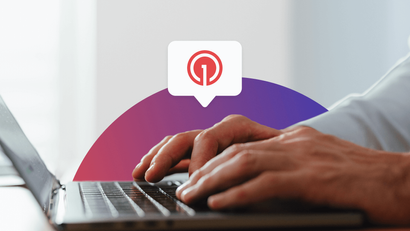Every mobile-first business, from the humble game studio to the tireless eCommerce brand, relies on a steady stream of users to drive revenue and sustain growth. The way your business communicates with these users is the single most important lever which touches almost every KPI. It’s the bridge between the value of your product offering and the needs of your audience.
If you’re considering switching messaging providers, then you probably have a “wish list” of capabilities contrasting the areas in which your current solution is falling short. Beyond those big-ticket items, understanding which specific features and characteristics to look for in a messaging solution will help set you up for long-term success. We’ve laid out the key things to consider and help ensure that your next move is the right one for your company.
Measure twice. Cut once.
Signs Your Company May Need to Switch Engagement Platforms
Before we dive into the core functionality you should be looking for, take a moment to go through the checklist below to help evaluate if switching providers should be on your radar in the first place. If any of these issues are impacting your current messaging strategy, then you are most likely more than ready to make a change.
❌ Not achieving current KPIs/goals — Consistently falling short on engagement goals, including converting free to paid, subscriber growth over time, CTR, or MAU (monthly active users.)
❌ Problems with deliverability — This is a deal breaker for a messaging solution. Reliability and transparency are key!
❌ Problems with automation — If you're struggling to create dynamic audience segments that help you target and personalize messaging in real time, you are not going to keep up with your competition. Detailed automation is the new industry standard, make sure you’re keeping up.
❌ Cost — If your current solution is becoming too costly for your ROI and the features offered to you. Case studies, reviews, and third-party reports can help you understand what type of return you can expect from switching providers.
❌ Unresponsive support — Problems are always expected, but so are solutions. If you experience roadblocks or bugs and your current provider isn’t willing to help, that’s a massive red flag that it may be time to switch. This is a relationship that needs to be nurtured equally by both sides.
❌ Limited growth potential — This may be due to a lack of messaging channels or a lack of advanced features needed to level up your engagement strategy and earn greater ROI. Sometimes even the service you’ve been happiest with simply isn’t built to keep up with your business.
❌ Lack of integrations — Your current solution doesn’t integrate easily with your tech stack and makes it difficult to leverage key user data in your engagement strategy.
❌ Interface is too complex or technical — If you never quite conquered the learning curve for your current solution and the complexity of the tool makes it difficult to execute simple campaigns or onboard new members of your team to help out, then it may be worth switching to a more intuitive solution. In a similar vein, if executing campaigns requires a lot of development support, than switching to a new solution could free up your dev team and allow marketing and product teams to function with more agility and autonomy.
What to Look For in a New Messaging Provider
1. Omnichannel Capabilities
It’s no longer enough to specialize in a few specific channels. Customers expect to interact with their mobile apps when and where it is most convenient for them. Even if you aren’t currently utilizing all messaging channels, giving yourself the option to expand your engagement strategy can unlock significant growth potential. An omnichannel messaging provider gives businesses the ability to reach and connect with their users across the most impactful channels available today.
Choosing an engagement provider that supports multiple messaging channels helps raise your likelihood of user reach and retention.
☑ Mobile push notifications
Mobile push notifications are a prerequisite for every mobile app. Mobile users expect businesses to engage them directly with highly relevant and carefully timed messages. Push notifications are often the very first thing people see when they look at their phones, giving you the most visibility to drive conversions and create a practical relationship with your customers.
Mobile apps suffering from high churn rates can use intelligently planned push notifications to re-engage stagnant users and increase retention rates month-over-month.
Sending targeted push notifications has been proven to boost retention rates by nearly 40%.
Explore how to personalize push notifications to get the most out of this incredibly powerful engagement channel.
☑ Web Push Notifications
You don’t need to be a mobile-first company to market with push notifications. Web-based businesses with substantial mobile traffic use web push notifications to re-engage users across desktop and mobile devices, creating more opportunities to actively capture off-site traffic.
Apple recently made the long-anticipated move to support web push on iOS and iPadOS 16.4+, giving companies a powerful avenue to engage anonymous users and increase their messaging reach.
☑ Live Activities
iOS Live Activities are perhaps the most dynamic mobile messaging channel currently available, however, not all messaging providers will support it. This dynamic widget is intuitively designed to appear on phone lock screens or home screens in a minimally invasive way while feeding users updates in real time.
This versatile mobile messaging channel can be used by almost any iOS mobile app to creatively enrich the user experience in a variety of ways.
- Travel apps – Real-time tracking for trip progress, flight statuses, or itinerary changes.
- Finance apps – Live updates for price changes and budget tracking.
- Sports apps – At-a-glance looks at live scores and statistics.
- Fitness and productivity apps – GPS tracking, workout progress, or as an unobtrusive way to visualize an app from the lock screen.
Interested in taking advantage of Live Activities? Check out how adding iOS Live Activities to your app can enrich your UX.
Email has been the workhorse messaging channel for all these years for a reason. It allows marketers to personalize their onboarding experience, collect valuable customer data, and use lengthier copy than other abbreviated channels like push notifications.
There are many email marketing misconceptions floating around, especially as omnichannel messaging continues to grow in importance. However, web-based companies can still rely on email messaging for ROI-friendly campaigns using a channel the majority of the public already trusts.
Even so, email messaging is most impactful as part of a larger cross-channel marketing strategy. Mobile-first businesses can use today’s state-of-the-art email marketing software to segment their audience, compose highly targeted content, and automate their campaigns for higher open rates.
If you need peace of mind, inbox-targeted marketing campaigns aren’t going anywhere. Email marketing revenue is expected to almost double from what it was in 2022 ($9.62 billion) within the next four years ($17.9 billion.)
☑ In-App Messaging
When users have your app open, you have their (least-divided) attention, and in-app messaging is an extremely flexible way to message these users based on specific behavior. Not only can in-app messages boost retention rates by 27%, but they’re universally valuable for almost any use case, including:
- Onboarding flows
- Collecting critical feedback through user surveys
- New feature releases and announcements
- In-app education
- Promotional offers and rewards
- Abandoned cart recovery
- Critical permission prompts
Most notably, in-app messaging requires no development expertise, allowing your product team to focus their time on creating the best platform instead of supporting cumbersome marketing implementations. Regardless of whether your business is web-based or mobile-first, in-app messaging is an engagement tool that belongs in every messaging plan.
☑ SMS
Although not fully utilized by every business, SMS marketing creates opportunities for messages to reach offline users with unparalleled reach. Whereas push notifications can be dismissed with the swipe of a finger and require users to have downloaded your app, SMS messaging exists independent of an internet connection and delivers “stickier” messages that live more permanently in users’ text conversations.
If you are expanding your cross-channel messaging capabilities, SMS is a wonderful bonus channel to implement for longer term, ongoing promotions. Where push notifications excel in real-time updates, SMS communications work great for product alerts or continuing support where an ongoing messaging thread is needed between you and your users.
2. Price
When switching messaging providers, price will inevitably be part of the conversation. Not only is it the biggest factor in determining your eventual ROI, but studying a provider’s pricing plans can uncover potentially deal-breaking gaps in their service. Keep an eye out for the following:
- How robust is their free plan? This is often a great place to test a platform’s core functionalities while getting a taste of more advanced features and integrations.
- Additional costs per messages sent. It is not uncommon for messaging platforms to offer core features at a flat rate, then charge on a per-message basis for things such as push subscribers, in-app impressions, and email sends.
- Enterprise solutions. This will be where the real value is if your business is ready to scale with a comprehensive engagement platform in place. Does the provider provide a custom contract and dedicated support? Mature businesses often require an account manager designated to them for management and plan personalization on an as-needed basis.
- Read the fine print! Many messaging providers will charge extra for API calls, data exports, or for sending large amounts of messages every month. Make sure you’re holding your partner’s feet to the fire over pricing transparency so you know exactly what you’re committing to.
To simplify things, take a step back and ask yourself, “Am I paying for what I use or paying for what they are telling me I will use?”
3. Ability to Scale
Are you a small business still getting your footing within your market, or are you aggressively looking to scale your platform? Your messaging provider must be able to move with you as your business grows. Reporting analytics, acquiring new users, and keeping retention high all take a tremendous amount of resources and experimentation.
A key part of this ability to scale is the sophistication and ease of using automation features. Saving time without sacrificing quality is a high-wire act, and it’s in your best interest to make sure your new messaging provider offers sophisticated personalization at your pace of growth. Does the provider make it easy to automate and personalize sequences so you can “set it and forget it” while it scales with your business?
Different automation tools offer different levels of sophistication and control. As you compare solutions, focus on finding a tool that allows you to automate at scale while at the same time making it easy to tailor that automation to your UX. For instance, Data Tags provide an easy way to identify user events or characteristics that are valuable to your app and use those to trigger campaigns, segment audiences, and personalize messaging at scale. Not all solutions are as flexible or easy to implement.
Price also plays into the scalability of a platform. Ideally, the cost of a solution should scale in relation to the value you receive from the platform. Look ahead and anticipate how your costs will change with different providers as your business grows, and weigh these costs against potential ROI.
4. Time to Value
Some messaging solutions take months to set up and even more time to learn. Choosing a solution that is easy to implement and intuitive to use can help you start seeing value more quickly and continue to grow your business.
When considering mobile messaging providers, the discussion of “Building vs. Buying” represents a major marketing (and developmental) crossroads — there are many limitations to trying to build an engagement solution in-house. Building out intuitive personalization, targeting, and automation features requires a considerable amount of dev time, resources, and ongoing maintenance. If you have the manpower and ramp time to invest in this sort of endeavor, then it may be the path that gives you the most control.
However, as your business scales, managing a revolving door of development bugs and user-targeting hiccups means more money spent putting out fires and less time dedicated to growing your platform. Don’t make the mistake of taking on the creation of an entirely new business just to augment the one you started in the first place.
This is, of course, a relatively simplified view of the “build vs. buy” conversation. Read a more in-depth breakdown of building vs. buying a push notification platform here.
5. Integration & Partnerships
Your messaging provider is a partner across your entire business, not a freelance department kept in isolation. Dedicate some serious time to digging into whether or not your messaging provider plays nice with other platforms. How easily does this new tool integrate with your current CRM? Do integrations (connections to third-party platforms) make it easier or more time-intensive to implement on your end? Ultimately you should be choosing a provider that connects to your current tech stack without any downtime.
If time is your most valuable resource, then strategic partnerships can help you get off the ground fast and allow you to focus your energy elsewhere.
6. Reviews, Ratings, and Case Studies
Social proof — it may very well be the lifeblood of your eCommerce website or mobile app storefront. Take a page from your own book and start digging into the reputation of prospective messaging providers.
Investigate reputable sites like G2 and read customer reviews to see how the product performs across different categories and what users are saying about the UX.
Read case studies to get a better sense of how other companies have achieved similar use cases or goals using the platform. The more information you can gather from your messaging partner up front, the better you can gauge your time to value, should you make your transition with them.
Try not to get hyper-fixated on the KPIs and strategy you already have in place. Instead, approach your prospective messaging provider leaving room for them to explain what they can accomplish for you. Case studies provide real-world examples of the vendor’s engagement strategy in action and give them a chance to break down how they can tailor their offerings on a company-to-company basis.
User engagement is not a one-size-fits-all solution — your messaging provider must prove their ability to meet you where you need them.
7. Educational Resources & Support
Does the solution come with adequate educational resources and support to execute campaigns?
Not only that, but you can be sure your provider is going to be doing some innovating of their own. How well do they onboard their clients for help learning new features with autonomy and speed? This is important to ensure time-to-value and reduce friction during the transition process.
Before choosing a provider, explore their resource library. Any messaging provider worth their salt will have an expansive resource library, with tool documentation, eBooks, data reports, demo videos, tutorials, and ongoing support systems.
Tips For Improving Your Transition Process When Switching Providers
✅ Understand what the transition process entails BEFORE you commit.
✅ Earn buy-in from key stakeholders at your company who touch the platform so everyone is equally invested in the transition.
✅ Create a transition plan and share educational resources with those involved (videos, blogs, documentation, etc.). If different people have different responsibilities during the transition process (eg. the design team needs to upload new files to the image library, data team needs to import subscribers, etc.), then outline responsibilities and timelines in your transition plan.
✅ Ask for support if you need it — leverage dedicated support resources if you run into roadblocks.
✅ Map your core capabilities with the core business processes most impacted by your new provider implementation. How will your weekly and monthly workflows change? How will the customer journey change for your users?
✅ Evaluate your current tech stack. Is it time to shut down any legacy messaging tools that cost more than what they’re delivering? A benefits-driven analysis will help you prioritize how to best “trim the fat” and make room for a smoother transition to a more holistic messaging provider.
Ready to Make a Change?
Choosing a messaging provider requires a fair bit of homework, but it’s time well spent. The more critical you are upfront of your provider’s capabilities and limitations, the less time you’ll spend recouping churned users, bothering your product development team, and pulling your hair out with the mother of all buyer remorse headaches.
When you’re ready to start testing mobile-friendly messaging providers, we’re here to make the experience impactful for marketers and product teams and seamless for developers. Our unique approach to personalized mobile messaging ignites user interest through organic behavior. We believe the best results are the ones that don’t need to be forced. Our platform may just be the fit you’re looking for.
Take a Virtual Tour of OneSignal



